Business Leadership: Management Fundamentals,Grade 12th,University/College Preparation (BOH4M)


-
Name:Business Leadership: Management Fundamentals,Grade 12th,University/College Preparation (BOH4M)
-
Grade:Grade 12th
-
Prereq:None
-
Code:BOH4M
-
Type:University/College Preparation
-
Credit Value:1
-
Develop Date:2021-01-01
-
Course Price:CAD $1300
-
Status:Active
Course Description:
This course focuses on the development of leadership skills used in managing a successful business. Students will analyze the role of a leader in business, with a focus on decision making, management of group dynamics, workplace stress and conflict, motivation of employees, and planning. Effective business and communication skills, ethics, and social responsibility are also emphasized.
Aims and Objectives:
- Broaden your understanding of the different types of leadership and management roles.
- Gain valuable time management skills and learn how to set shared organizational goals.
- Understand the qualities and skills of a successful manager and business leader.
- Discover techniques for boosting your self-esteem and assertiveness in the workplace.
- Learn how to maintain strong working relationships with colleagues and clients.
- Explore practical team-building exercises and learn how to provide effective feedback for employees.
- Develop essential skills in problem-solving, communication, body language and relationship-building.
- Define your leadership style and improve your business communication.
Expectations:
- Foundation of Management and Ethics
By the end of this course, students will:
- Make an overview of the business environment, as well as main actors, stakeholders and motives of company international activities.
- Introduce basic theoretical approaches and principles, the founders and key followers of management theory.
- Leading in Management
By the end of this course, students will:
- Be able to understand core principles, ideas and instruments of international management.
- Give an understanding of basic management functions.
- Make an overview of corporate structures, processes and procedures originating activities in a global environment.
- Management Challenges
By the end of this course, students will:
- Emphasize the role of leaders and talents in making business client-centric, socially responsible and sustainable.
- How to target international market and what will be the results by adopting this strategy.
- Organization in Management
By the end of this course, students will:
- Build up and stimulate an interest to the course and knowledge-formation process. Stimulate self-work (cabinet and field studies) for an in-depth understanding of the course material.
- Provide a piece of advice on the search on the Internet of the most reliable, respectful and knowledge-based websites, web-pages and video-recourses.
- Coach and consult students in research projects.
- Motivate for excellent results of research projects and its presentations in-class.
- Planning and Controlling
By the end of this course, students will:
- Analyze the importance of planning to the success of an organization.
- Demonstrate an understanding of appropriate planning tools and techniques in a variety of situations.
- Analyze the relationship between strategic planning and the success of an organization.
- Analyze how companies respond to internal and external pressure for change.
- Assess the importance of control in management.
Unit-wise Progression:
|
Unit
|
Title and Subtopics |
|
Unit 1 |
Foundation of Management and Ethics
- Hours: 25 |
|
Unit 2 |
Leading in Management
- Hours :25 |
|
Unit 3 |
Management Challenges
-Hours: 25 |
|
Mid-Term - Hours: 2 |
|
|
Unit 4 |
Organization in Management
- Hours: 25 |
|
Culminating Activity – 5 Hours |
|
|
Final Term – 3 Hours |
|
|
Total – Hours 110 |
|
Teaching/Learning Methodologies:
Students learn best when they are engaged in a variety of ways of learning. Business studies courses lend themselves to a wide range of approaches in that they require students to discuss issues, solve problems using applications software, participate in business simulations, conduct research, think critically, work cooperatively, and make business decisions. When students are engaged in active and experiential learning strategies, they tend to retain knowledge for longer periods and to develop meaningful skills. Active and experiential learning strategies also enable students to apply their knowledge and skills to real-life issues and situations. Some of the teaching and learning strategies that are suitable to the material taught in business studies are the use of case studies and simulations, teamwork, brainstorming, mind mapping, problem-solving, decision making, independent research, personal reflection, seminar presentations, direct instruction, portfolios, and hands-on applications. In combination, such approaches promote the acquisition of knowledge, foster positive attitudes towards learning, and encourage students to become lifelong learners. Since the overriding aim of this course is to develop an accounting literacy in all students, a wide variety of instructional strategies are used to provide learning opportunities to accommodate a variety of learning styles, interests and ability levels. These include:
- Currency Analysis
- Problem-solving
- Decision Making
- Projects
- Direct Instruction
- Data Analysis
- Case studies
- Answering Questions about Readings
- Reports
- Using Charts and Tables
- Discussion Groups
- Multimedia Presentations
- Independent Research
- Guided Internet Research
- Using Business Glossaries
Other strategies used include; Guided Exploration, Problem Solving, Graphing, Visuals, Direct Instruction, Independent Reading, Independent Study, Ideal Problem Solving, Model analysis, Logical-Mathematical Intelligence, Graphing Applications, and Problem Posing.
E-Learning Approach:
E-learning is not only a training method but it is a learning method that is tailored to individuals. It is found that different terminologies have been used to define learning that takes place online which actually makes difficult to develop a generic definition.
E-learning includes the delivery of content via Internet, Intranet, and Extranet, satellite broadcast, audio-video tape, interactive TV and CD-ROM. The term implies that the learner is at a distance from the tutor or instructor, that the learner uses some form of technology.
With attention to this new system of education that is spreading across the globe it’s imperative that the content of such study programs are enhanced and modified to serve both the learner and the instructor well whilst dealing with the gap of conventional studying methodologies. Thus the courses promise its reader an experience full of engagement, student-concentric approach, personalization and Interaction. Using a wide array of multimedia tools, cloud based LMS and diverse repository of subject tailored audio-visual material that student can utilize and learn in a stimulated work environment where he’s in charge of his work hours.
Our e-learners paddle through these courses in the mediation of skilled mentors to the finish line with understanding of their subject’s application into real world problems following a futuristic model of education.
Strategies for Assessment and Evaluation of Student Performance:
Assessment is the ongoing gathering of information related to the individual student’s progress in achieving the curriculum expectations of the course. To guide the student to his/her optimum level of achievement, the teacher provides consistent and detailed feedback and guidance leading to improvement. Strategies may include:
- Diagnostic assessment
- Formative assessment
- Summative assessment
- Performance assessment
- Portfolio assessment
- Rubrics
- Checklists
The final grade will be based on:
|
Weightage in Percentage
|
Categorical Marking Breakdown |
|
40% |
Course Work |
|
20% |
Mid Term |
|
10% |
Culminating Activity |
|
30% |
Final Exam |
|
Assessment of Learning
|
||
|
Student Product |
Observation |
Conversation |
|
Learning Logs (anecdotal) Assignment Pre-tests (scale/rubric) Quizzes (scale/rubric) Rough drafts (rubric) Graphic organizers (scale) Peer feedback (anecdotal/checklist) Reports (rubric) Essays (rubric) Webbing/Mapping (rubric/scale) Vocabulary notebooks (anecdotal) Visual Thinking Networks (rubric) Tests (scale/rubric) Exams
|
Self-proofreading (checklist) Class discussions (anecdotal) Debate (rubric) PowerPoint presentations (rubric) Performance tasks (anecdotal/scale)
|
Student teacher conferences (checklist) Debate (rubric) Peer-feedback (anecdotal) Peer-editing (anecdotal) Oral pre-tests (scale/rubric) Oral quizzes (scale/rubric) Oral tests (scale/rubric) Question and Answer Session (checklist)
|
Resources Required by the Student:
- Microsoft Suite (Word, Excel, Power-point etc.)
- A laptop, or Mac, or Android, or any other operating system functional enough to use the web browser and use online software.
- Curriculum Reference: The Ontario Curriculum, Business







